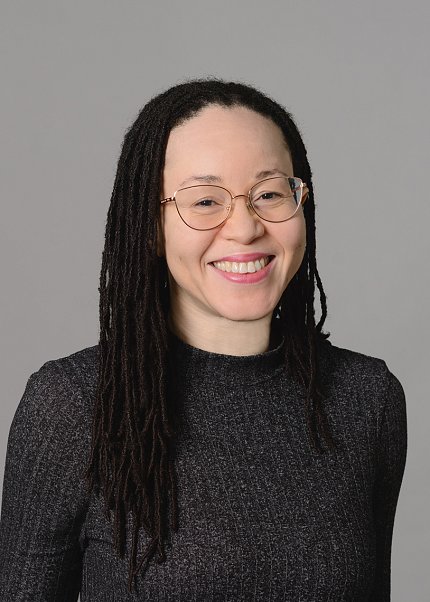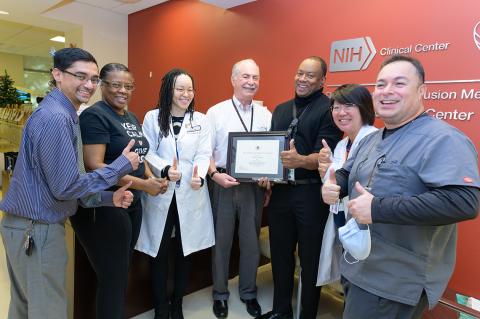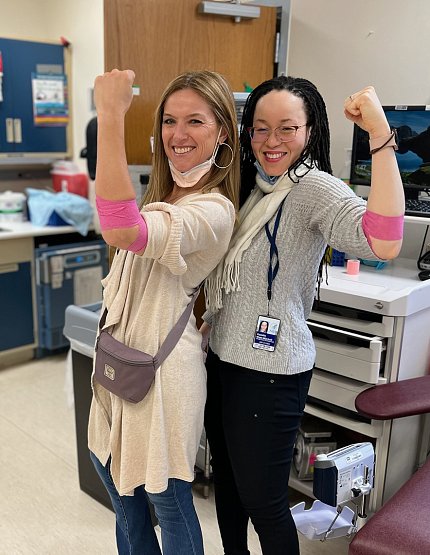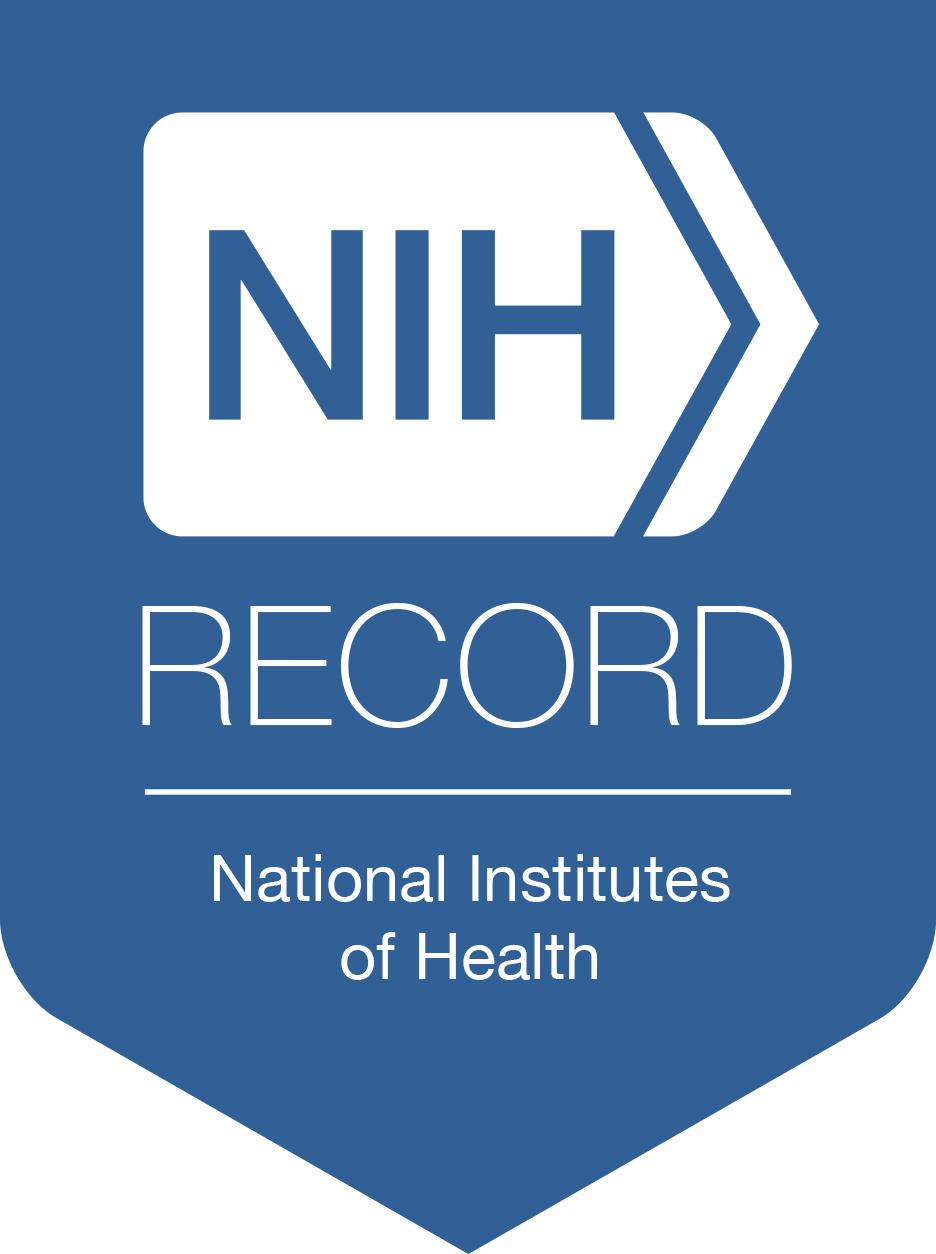Answering the Call
NIH Blood Bank: The Lifeblood of the Clinical Center

Photo: Marleen Van Den Neste
Every day, patients at the NIH Clinical Center require blood transfusions. Thanks to the NIH Blood Bank, this need is fulfilled in-house by generous donors.
Most hospitals get blood from outside suppliers such as the Red Cross, so hospital-based blood banks are increasingly rare.
Only 3% of eligible people in the U.S. are blood donors, said Dr. Kamille West-Mitchell, chief of the Blood Services Section in the Clinical Center’s Department of Transfusion Medicine. “Somebody has to answer the call.”
At NIH, those responders are a combination of NIH’ers, the local community and family members of patients undergoing treatment at the Clinical Center (CC). There are two donation sites: the first floor of the CC and, off campus, at the NIH Donor Center on Fisher’s Lane. Whole blood donations are the most common form of donation, but the Blood Bank also accepts double red cell apheresis, platelets and AB plasma.
Each year, CC patients receive a total of about 7,000 units of blood products, most commonly to treat cancer and blood disorders, and for major surgeries.
Types of Blood Donation
Whole blood is the complete mixture of all cell types (red blood cells, white blood cells and platelets) suspended in plasma, the liquid portion of blood. A single whole-blood donation is 500 mL, which equates to one unit of blood. Whole blood can be separated into its components in the lab, so that one donation can help multiple patients. Red blood cells are refrigerated and can be stored for over a month, while other blood components such as platelets only last for five days after donation. Apheresis, the method through which specific components of blood are extracted, involves collecting the blood by a needle in one arm, passing through a machine that extracts the desired cell type and returning the rest to the donor via a needle in the same arm or their other arm.
Platelets, which are crucially important to prevent life-threatening bleeding, are collected via apheresis at the Fisher’s Lane location, and are always in critical need because of their short shelf life. Double red cell apheresis is a donation that allows the donor to give two units of red blood cells during a single donation. People who have the AB blood type are universal plasma donors and can give plasma to any other person, regardless of their blood type. Apheresis is also used to extract plasma.
Meeting the Need
The Blood Bank maintains certain target levels for each blood and donation type, said West-Mitchell. O positive and A positive are the most common blood types, for example, so they may also be the most in demand. Acute shortages, which may occur during a patient surgery, are announced over the CC’s PA system. Blood drives are a great way to engage your institute or group to donate and can be arranged in coordination with the NIH blood bank team.

Photo: Marleen Van Den Neste
Blood Bank phlebotomists and nurses typically see about 20 whole-blood donors and 10 apheresis donors each day.
West-Mitchell stressed the importance of accepting donors from all backgrounds. The blood donor population tends to be older, for example, and may be more likely to have chronic health conditions that can make donating riskier for them. Ancestry is another factor that can influence a donor’s likelihood at being a good match for a patient. African American donors, for example, are most likely to be a good match for patients with sickle cell anemia, an inherited blood disorder that disproportionately affects that population.
Giving Hope
West-Mitchell is fascinated by the interplay of genetics with transfusion medicine. As a medical student in Jamaica, she chose to specialize in transfusion medicine because the field combines “the very human side of lab medicine and the lab side of clinical medicine.”
She came to the NIH Blood Bank 12 years ago for a fellowship and has remained as a member of the clinical faculty for the last 10 years. Her job can be very heartwarming, she said, because of the generosity of blood donors.
Granulocyte donations, for example, benefit patients with weakened immune systems by giving them extra white blood cells. The donation process requires multiple visits with no compensation, but donors nonetheless go out of their way to provide life-saving granulocytes to complete strangers.
“This is from a stranger who doesn’t know my son,” the mother of a pediatric oncology patient once remarked to West-Mitchell, as her child received a life-saving transfusion. “Everyone in the room was brought to tears,” West-Mitchell recalled.
Every Donation Counts

To raise awareness about the ongoing need for donations, the Blood Bank recognizes various donor events throughout the year, such as World Blood Donor Day on June 14th. Donor milestones are another way to honor regular, repeat donors. Marty Zimelis, for example, “Mr. 300,” has surpassed his 300th platelet donation. A small number of donors have even reached 400 donations.
These milestones are commendable, but, as West-Mitchell said, “We celebrate all donors.” Every donation makes a difference. “If every eligible person donated once on their birthday, we would never need to collect more blood,” she said. She donates blood on her birthday, in addition to another donation each year.
As the unofficial slogan of the Blood Bank says, giving blood also gives hope—both of life-saving value to the patients at the Clinical Center.
To learn more about the NIH Blood Bank, visit https://www.cc.nih.gov/bloodbank.
